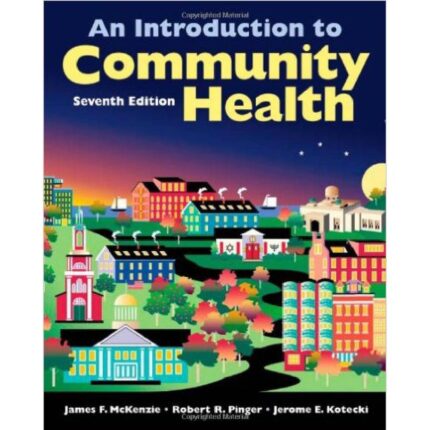Health Care USA Understanding Its Organization and Delivery 8th Edition by Harry A. Sultz – Test Bank
Multiple Choice
1. In colonial American, mental health “treatment” consisted of:
A. Compassionate, volunteer community members housing the mentally ill in their private homes to give structured comfort and care
B. federal and state institutions providing social and behavioral programs
C. confinement in homes, in jails or in almshouses where patients suffered severely
D. community-based services that provided herbal medicines
Ans.: C
Page: 396
2. National awareness of the needs of the mentally ill rose sharply in the aftermath of WWI because:
A. a large number of soldiers had been rejected from the draft due to mental illness
B. by the end of the war, several new effective pharmacologic treatments for mental illness had become available
C. the passage of the National Mental Health Act prompted political attention to the causes of the mentally ill
D. thousands of soldiers returned from the war suffering from “war neurosis” or “shell shock”
Ans.: D
Page: 397
3. During the 1960s, one factor that enabled mentally ill persons to move from large institutions to community settings was:
A. the development of effective pharmacologic treatments for many disorders
B. rising concern over the costs of inpatient care
C. the invention of psycho-surgery
D. the Quaker movement for “moral treatment”
Ans.: A
Page: 398
4. Throughout the 1960s and 1970s, federal and state governments expanded community mental health centers and services based on which untested assumptions?
A. Structured supervision and strenuous labor could reduce mental illness symptoms
B. Severe mental illness did not differ qualitatively from lesser forms of mental distress and early intervention could prevent development of major psychiatric disorders
C. Social relationships and recreational activities offered in community mental health centers would contribute to reducing symptoms
D. No matter how ineffective, community-based treatment of the severely mentally ill was a better alternative than incarceration in large institutions
Ans.: B
Page : 398
5. The term, “non-parity,” as it applies to insurance coverage for mental health services, is best defined as:
A. discrimination laws based on age and gender
B. insurers using different and unequal systems to cover mental health from those used for medical care
C. reimbursement approvals according to specific diagnoses
D. reimbursement for outpatient services at rates different from hospitalization
Ans.: B
Page: 399
6. In the late 1970s and early 1980s, efforts of advocacy groups such as the National Alliance on Mental Illness, the National Institutes of Health and clinical researchers ultimately demonstrated that:
A. early intervention could prevent the development of severe mental illness
B. community-based social therapy was as effective in treating mental illness as institution-based care
C. psychiatric disorders are biologically-based illnesses requiring targeted treatments, not unfocused “talk” therapies.
D. Psycho-social stressors had little influence on the occurrence of episodes of acute mental illness
Ans.: C
Page: 400
7. World Health Organization ranking of the leading causes of disability in the U.S. and Canada in terms of the total number of years lost to illness, disability or premature death places neuropsychiatric disorders at what level?
A. third
B. fourth
C. second
D. first
Ans.: D
Page: 402
8. An individual’s diagnosis with two or more mental illness diagnoses occurring at the same time is termed:
A. Comorbidity
B. Bipolar disorder
C. Schizophrenia
D. Obsessive-compulsive disorder
Ans.: A
Page: 404
9. Many factors are associated with lack of access to mental health care. One reason why only about one-third of those in need of mental health services actually receives them is:
A. mental health treatment is known to be rarely effective
B. treatment is often painful, with serious side effects
C. fear of family and social stigmatization
D. fear of treatment side effects
Ans.: C
Page: 405
10. Which of the following is not a reason why access to adequate mental health treatment for children and adolescents is particularly problematic?
A. Clinical research involving children has lagged behind that for adults
B. Inadequate numbers of well-trained child and adolescent psychiatrists
C. Parental reluctance to acknowledge mental health problems in their children
D. Few practitioners access research findings on treatment efficacy
Ans.: C
Page 406













Reviews
There are no reviews yet.